Aces High Air Manuals
Volume 4: Euro Fighters
Sweden
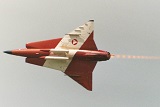
|
Saab SK-35C Draken Flight Manual
121 pages
|

|
Saab 35XD Draken Flight Manual
706 pages
The 35XD is the Danish export version of the Draken. The type was heavily modified to make it into a strike aircraft; compared to the Swedish versions the outer wings where completely redesigned, and the radar was missing. These aircraft could carry heavy bombs as well as Bullpup missiles; during the WDNS upgrade of the 1980s they received the ALQ-162 jammer, a Marconi 900 Series HUD and a Ferranti LRMTS (laser rangefinder and marked target seeker)
Photo credit: Alan Radecki (CC-BY 2.5) |
France
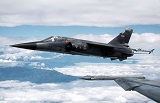
|
Dassault Mirage F1 Flight Manual (English)
364 pages
The Dassault Mirage F1 is a French fighter and attack aircraft designed and built by Dassault Aviation as a successor of the Mirage III family. The Mirage F1 entered service in the French Air Force in 1974. Powered by a single SNECMA Atar turbojet providing about 7 tonnes-force (69 kN; 15,000 lbf) of thrust, the F1 has been used as a light multipurpose fighter and has been exported to about a dozen nations. More than 720 F1s have been produced.
|
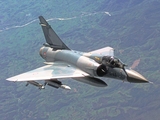
|
Dassault Mirage 2000C Flight Manual (French)
131 pages
The Dassault Mirage 2000 is a French multirole, single-engine fourth-generation
jet fighter manufactured by Dassault Aviation. It was designed in the late 1970s as a
lightweight fighter based on the Mirage III for the French Air Force. The Mirage 2000 evolved into a multirole aircraft with several
variants developed, with sales to a number of nations. The variants include the
Mirage 2000N and 2000D strike variants, the improved Mirage 2000-5 and several export variants. Over 600 aircraft were built and it has seen service with nine
nations.
|

|
Dassault Mirage IIIE Flight Manual (French)
91 pages
The Dassault Mirage III is a family of single-seat, single-engine, fighter aircraft produced by Dassault Aviation for the French Air Force and widely exported. Prominent operators included Argentina, Australia, South Africa, Pakistan and Israel, as well as a number of nonaligned nations. Though an older design, the second generation fighter is still a maneuverable aircraft and an effective opponent in close range dogfighting. In French service it was armed with air-to-ground ordnance or R.550 Magic air-to-air missiles.
The versatility of the design enabled production of trainer, reconnaissance and ground-attack versions as well as the Dassault Mirage 5, Dassault Mirage IIIV and Atlas Cheetah variants. A Mirage III was the first Western European combat aircraft to exceed Mach 2 in horizontal flight. Photo credit: Chris Lofting (GFDL 1.2) |
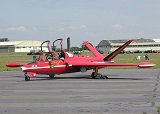
|
Fouga CM.170R Magister Flight Manual (English)
126 pages
The Fouga CM.170 Magister is a 1950s French two-seat jet trainer aircraft, developed and manufactured by aircraft company Fouga. Due to industrial mergers, the aircraft has been variously known as the Fouga CM.170 Magister, Potez (Fouga) CM.170 Magister, Sud Aviation(Fouga) CM.170 Magister and Aérospatiale (Fouga) CM.170 Magister, depending on where and when they were built.
|

|
Fouga CM.170R Magister Pilot's Handbook - Text (English)
107 pages
This flight manual is for the CM.170R, the initial production version of the Magister. As is typical for French flight manuals, it is split into text and planches ("boards", meaning illustrations) sections. This is the text section.
|

|
Fouga CM.170R Magister Pilot's Handbook - Illustrations (English)
85 pages
This flight manual is for the CM.170R, the initial production version of the Magister. As is typical for French flight manuals, it is split into text and planches ("boards", meaning illustrations) sections. This is the text section.
|
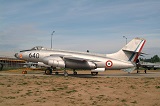
|
Sud-Ouest Aviation S.O.4050 Vautour IIN Crew Manual - Volume I - Text (French)
362 pages
The Sud-Ouest Aviation (SNCASO) S.O. 4050 Vautour II was a French bomber, interceptor, and attack aircraft used by the Armée de l'Air (AdA). Later, 28 of these aircraft were used by the Israeli Air Force. Vautour is the French word for vulture.
|

|
Sud-Ouest Aviation S.O.4050 Vautour IIN Crew Manual - Volume I - Illustrations (French)
111 pages
In June 1951 the French Armée de l'Air (AdA) issued a requirement for a jet aircraft capable of acting as a bomber, a low-level attack aircraft, or an all-weather interceptor. SNCASO adapted its existing S.O. 4000 for this purpose, the first prototype S.O. 4050 making its initial flight on 16 October 1952.
|

|
Sud-Ouest Aviation S.O.4050 Vautour IIN Crew Manual - Volume II - Illustrations (French)
28 pages
Subsequently named Vautour II, the aircraft was built in three versions. It entered service with the AdA in 1958, with the last French aircraft leaving frontline service in 1979. A few soldiered on in various duties into the early 1980s. The Vautour saw no combat in French service, and for much of its AdA service life it was maligned as obsolete and underpowered. Although a moderately good aircraft when originally produced, it never received sufficiently powerful engines. As an interceptor it was outclassed by the Dassault Mirage III, and as a bomber or attack aircraft its lack of an advanced navigation/attack system was a crippling limitation.
|

|
Sud-Ouest Aviation S.O.4050 Vautour IIN Crew Manual - Appendix I Performance - Illustrations (French)
188 pages
The only export customer for the Vautour was Israel, which purchased 28 for the IDF/AF. The Israeli Vautours also entered service in 1958. They saw combat against Egypt beginning the following year and in a series of actions through the Six Day War and War of Attrition. The Israeli Vautours took part in bombing, strafing and air-to-air engagements. In the Six Day War, over three days Vautours fought repeated combats with Iraqi Air Force fighters while raiding H-3 airfield in Western Iraq. On June 6, 1967, Captain Ben-Zion Zohar scored the type's only aerial victory when he downed an Iraqi Hawker Hunter, although two Vautours fell to the guns of Iraqi Hunters on the following day. In all 15 Vautours were lost.
|

|
Sud-Ouest Aviation S.O.4050 Vautour IIN Crew Manual - Annex II Weight and Balance - Illustrations (French)
15 pages
The Vautour was retired in 1971 in favor of the A-4 Skyhawk, and the last aircraft left service in March 1972, serving as decoys in the Sinai. The Israelis were pleased with the Vautour's range and versatility, and it was well regarded in Israeli service.
|
Czech Republic
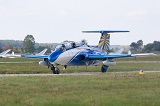
|
Aero L-29 Delfin Flight Manual
242 pages
The Aero L-29 Delfin (English: Dolphin, NATO reporting name: Maya) is a military jet trainer aircraft that became the standard jet trainer for the air forces of Warsaw Pact nations in the 1960s. It was Czechoslovakia's first locally designed and built jet aircraft.
Photo credit: Dmitry A. Mottl (CC-BY-SA 3.0) |
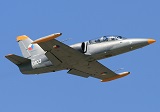
|
Aero L-39 Albatros Flight Manual
364 pages
The Aero L-39 Albatros is a high-performance jet trainer aircraft developed in Czechoslovakia by Aero Vodochody. It was designed during the 1960s as a replacement for the Aero L-29 Delfin as a principal training aircraft. The L-39 Albatros has the distinction of being the first of the second-generation jet trainers to be produced, as well as being the first trainer aircraft to be equipped with a turbofan powerplant. The type was widely exported to a wide range of international operators as a military trainer. To date, more than 2,800 L-39s have served with over 30 air forces around the world. The Albatros is the most widely used jet trainer in the world; in addition to performing basic and advanced pilot training, it has also flown combat missions in a light-attack role. Atypically, it has never received a NATO reporting name.
Photo credit: Alan Lebeda (GFDL 1.2) |
Consortia
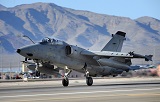
|
AMX International AMX(T)-1 Flight Manual
566 pages
The AMX International AMX is a ground-attack aircraft for battlefield interdiction, close air support and reconnaissance missions. As a result of a memorandum between Italy and Brazil for the type's joint development in 1981, AMX International, an Italian-Brazilian joint venture, was formed to develop, manufacture, and market the aircraft. The AMX is designated A-11 Ghibli by the Italian Air Force and A-1 by the Brazilian Air Force.
The AMX is capable of operating at high subsonic speed and low altitude, by day or night, and if necessary, from bases with poorly equipped or damaged runways. It possesses a low infrared (IR) signature and a reduced radar-equivalent cross-section to help prevent detection, while low vulnerability of structure and systems aid survivability and a compliment of integrated electronic countermeasures (ECM), air-to-air missiles and nose-mounted guns provide self-defence capabilities. |

|
Eurofighter EF2000 Typhoon Avionics System Flight Manual
358 pages
The Eurofighter Typhoon is a twin-engine, canard-delta wing, multirole
fighter. The Typhoon was designed and is manufactured by a consortium of
three companies; BAE Systems, Airbus Group and Alenia Aermacchi, who conduct the
majority of affairs dealing with the project through a joint holding company,
Eurofighter Jagdflugzeug GmbH, which was formed in 1986. The project is managed by
the NATO Eurofighter and Tornado Management Agency, which also acts as the prime
customer.
The Typhoon is a highly agile aircraft, designed to be an effective dogfighter when in combat with other aircraft; later production aircraft have been increasingly more well-equipped to undertake air-to-surface strike missions and to be compatible with an increasing number of different armaments and equipment. The Typhoon saw its combat debut during the 2011 military intervention in Libya with the Royal Air Force and the Italian Air Force, performing reconnaissance and ground strike missions. The type has also taken primary responsibility for air defence duties for the majority of customer nations. Photo credit: Ronnie Macdonald License: CC-BY 2.0 |

|
Panavia Tornado Flight Manual
675 pages
The Panavia Tornado is a family of twin-engine, variable-sweep wing multirole combat aircraft, which was jointly developed and manufactured by Italy, the United Kingdom, and West Germany. There are three primary Tornado variants: the Tornado IDS (interdictor/strike) fighter-bomber, the suppression of enemy air defences Tornado ECR (electronic combat/reconnaissance) and the Tornado ADV (air defence variant) interceptor aircraft.
The Tornado was developed and built by Panavia Aircraft GmbH, a tri-national consortium consisting of British Aerospace (previously British Aircraft Corporation), MBB of West Germany, and Aeritalia of Italy. It first flew on 14 August 1974 and was introduced into service in 1979–1980. Due to its multirole nature, it was able to replace several different fleets of aircraft in the adopting air forces. The Royal Saudi Air Force (RSAF) became the only export operator of the Tornado in addition to the three original partner nations. A tri-nation training and evaluation unit operating from RAF Cottesmore, the Tri-National Tornado Training Establishment, maintained a level of international co-operation beyond the production stage. The Tornado was used by the Royal Air Force (RAF), Italian Air Force and RSAF during the 1991 Gulf War, in which the Tornado conducted many low-altitude penetrating strike missions. The Tornados of various operators were also used in conflicts in the former Yugoslavia during the Bosnian War and Kosovo War, the Iraq War, Libya during the Libyan civil war, as well as smaller roles in Afghanistan, Yemen, and Syria. Including all variants, 992 aircraft were built. |
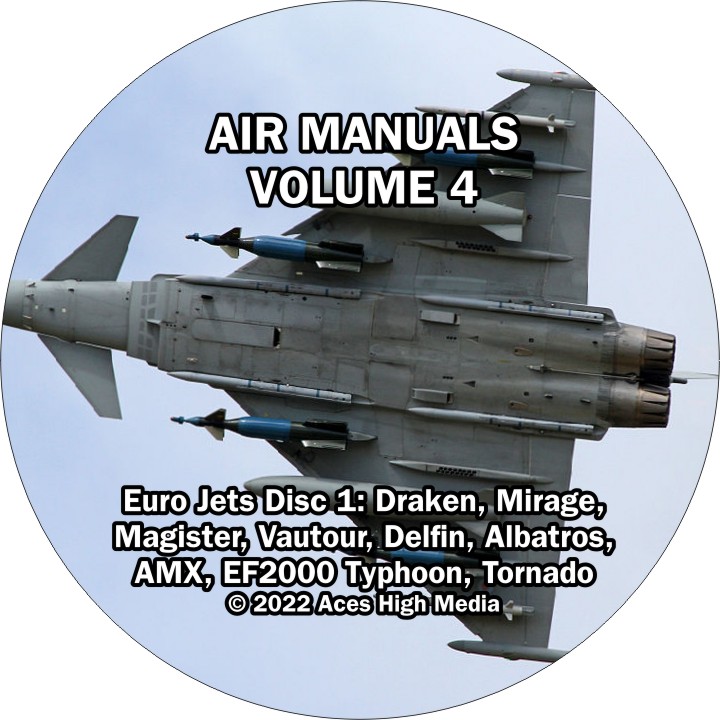
Photo credit: HoHun@de.wikipedia (CC-BY-SA 3.0)